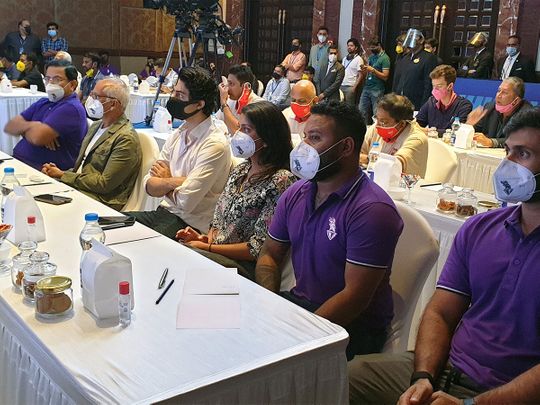
Image Credit: ANI
Pulling in more cash, cricket has evolved from an amateur sport to a multimillion-dollar industry. Exponentially growing, the IPL now is a mega-profitable business. When India won the inaugural ICC T20 World Cup in 2007, we saw the Indian Board getting inclined towards the shortest format of the game. Cricket has been around for centuries and has turned out to be one of the world’s most popular sports. Cricket in India has always been at a skyrocketing success rate, but it was only after the 1983 World Cup that this success got a further boost and stepped on to the ladder of development.
The beginning of IPL
IPL or the Indian Premier League was a mastermind project of Lalit Modi, a shrewd businessman who first arrived in BCCI and came up with the idea of starting a one-of-a-kind Indian league similar to the football leagues happening all around the world. Surrounded by controversies with the ICL (Indian Cricket League) back then, BCCI stepped in and banned all the cricketers who participated in the ICL.
History has revealed that the three major things that people value the most and work successfully in India are Politics, Bollywood and Cricket. Lalit Modi roping in the Bollywood stars like Shah Rukh Khan, Preity Zinta and Shilpa Shetty further made them garner the interest of investors in this cash-rich league. This was an instant hit with eight franchises having teams in the names of different cities/states like Mumbai, Chennai, Kolkata, Bangalore, Hyderabad, Delhi, Punjab and Rajasthan.
When the IPL started in 2008, the teams were auctioned to various corporates who brought a huge amount by bidding into the cricket business. At that time, BCCI sold the teams for a total of Rs 3.2 crores ($0.43 million). However, the team price was payable for a period of 10 years as the annual fee. Each franchise paid Rs 400 crores ($54.48 million) over 10 years and every franchise had to bear the cost of players’ fees, support staff fees, travel fees as well as logistics.
How IPL contributes to Indian economy
IPL has a brand value of Rs 475 billion and it contributes Rs 11.5 billion ($3,131 million) to the Indian GDP and impacts the Indian economy with Rs26.5 billion ($360 million), according to the reports shared by the KPMG sports advisory board. The biggest revenue for the IPL league comes from broadcaster ‘Star Sports’, paying a whopping Rs16, 347 crores ($2.22 million) to the BCCI from 2018-2022. The other main revenue for the IPL league comes from the title sponsor partner ‘Vivo’, paying Rs4.4 billion ($59.9 million) per year and many other support sponsors in the line.
How does a team owner recover the money they have invested?
The foremost revenue for a team owner is via sponsorship for their jersey. Over the years, the spots on the jerseys have increased and teams charge a huge amount to get a spot on the jersey. The other revenue for the team owner is through the central sponsorship, which the BCCI shares to every franchise in equal ratio. Most of the matches go full house in India and paves a way for another source of revenue, through ticket sales. Besides that, advertisements done on the boundary lines and the banners also go with the home team. The teams also make considerable revenue by selling merchandise like T-shirts, caps, which are purchased largely by the fans.
Whenever IPL happens in India, no Bollywood movies are released as every fan is glued to the television, watching their favourite players and franchise. Because of the colossal success of IPL over the last 13 editions, even the pandemic has not stopped it from successfully running in the UAE. At the same time, the TRP rating on television of watching the IPL game had reached its highest levels with 269 million viewers across 86 million households. So big is the IPL that there is a two-month window free for IPL to happen with no cricketing event happening during this period.
The cricketers who have been doing well for their respective countries get picked up in the auction by the franchise and also get paid quite heavily. Indian players like Virat Kohli, MS Dhoni, Rohit Sharma are all paid around Rs17 crores ($2.31 million) per year. It’s no different with foreign players like Pat Cummins getting 15 crores, Chris Morris from South Africa getting Rs16 crores ($2.18 million), Glen Maxwell getting Rs 14 crores ($1.90 Million). Even a young fast bowler ‘Kyle Jamieson’ from New Zealand got Rs 15 crores ($ 2.04) in his debut year. Most of the players have made a fortune in this cash-rich IPL. When the league is so popular, the opportunity to earn more depends on the performance and the franchises leave no stone unturned.
Today with the advent of IPL, Indian cricket is at its peak as players get to rub shoulders with international cricketers around the world. Even the pressure of playing IPL is as good as international cricket, making it a life-changing game.
Old generation or new generation, the brand of IPL has taken the world by a storm, which is growing bigger every year.

